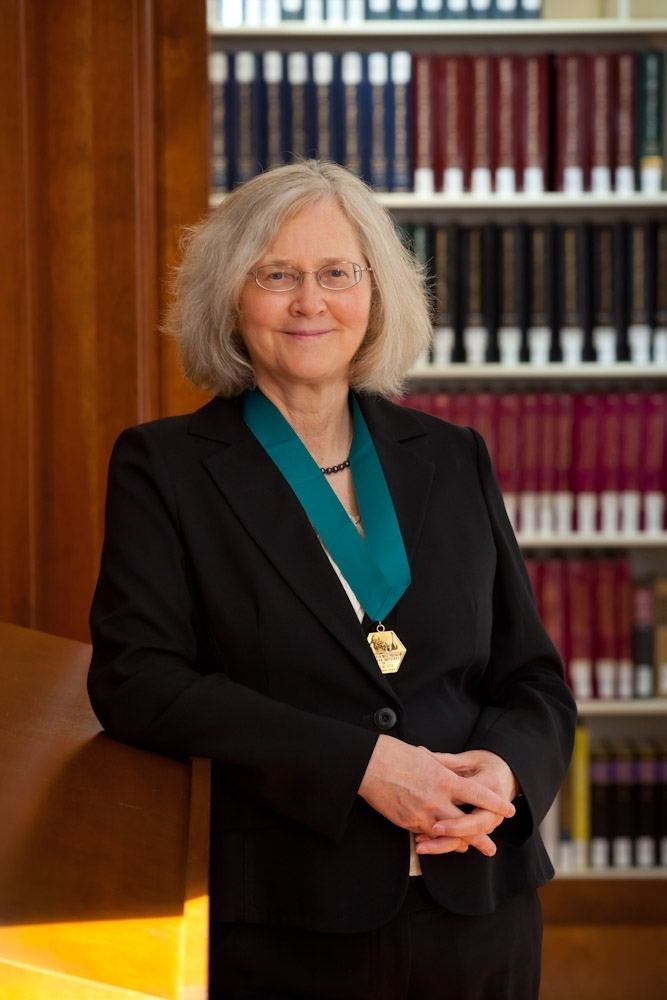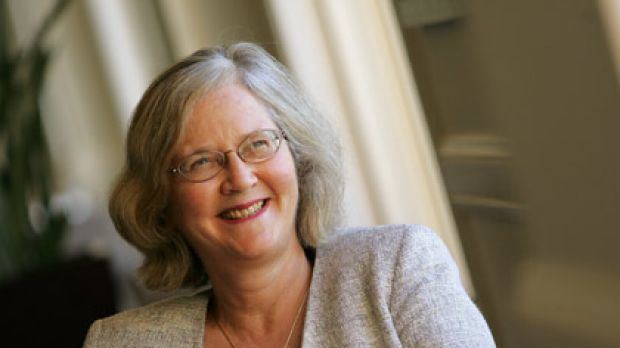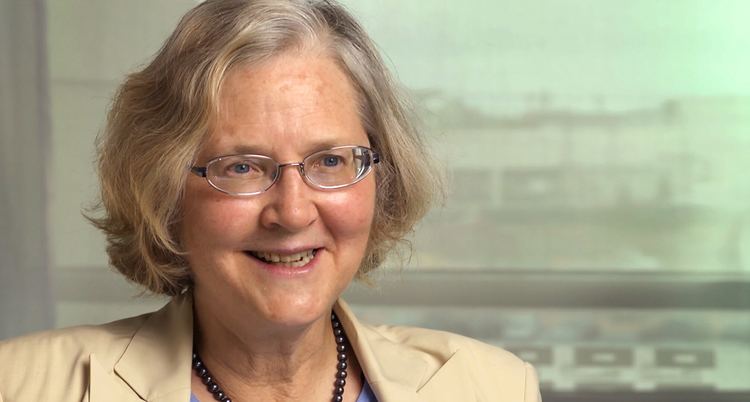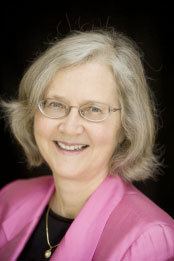Residence US Fields Molecular biology | Role Researcher Name Elizabeth Blackburn | |
 | ||
Citizenship Australian and American Institutions University of California, BerkeleyUniversity of California, San FranciscoYale UniversitySalk Institute Thesis Sequence studies on bacteriophage OX174 DNA by transcription (1974) Books Telomeres and Telomerase: Ends and Means Similar People Carol W Greider, Jack W Szostak, Ada Yonath, V Narry Kim, Joseph G Gall | ||
Elizabeth blackburn great minds
Elizabeth Helen Blackburn, AC, FRS, FAA, FRSN (born 26 November 1948) is an Australian-American Nobel laureate who is currently the President of the Salk Institute for Biological Studies. Previously she was a biological researcher at the University of California, San Francisco, who studied the telomere, a structure at the end of chromosomes that protects the chromosome. Blackburn co-discovered telomerase, the enzyme that replenishes the telomere. For this work, she was awarded the 2009 Nobel Prize in Physiology or Medicine, sharing it with Carol W. Greider and Jack W. Szostak, becoming the only Tasmanian-born Nobel laureate. She also worked in medical ethics, and was controversially dismissed from the Bush Administration's President's Council on Bioethics.
Contents
- Elizabeth blackburn great minds
- Researchers need to be resilient and opportunistic elizabeth blackburn nobel laureate
- Early life and education
- Work in molecular biology
- Bioethics
- Works
- Awards and honors
- Personal life
- References

Researchers need to be resilient and opportunistic elizabeth blackburn nobel laureate
Early life and education

Elizabeth Helen Blackburn was born in Hobart, Tasmania on 26 November 1948. Her family moved to the city of Launceston when she was four, where she attended the Broadland House Church of England Girls' Grammar School (later amalgamated with Launceston Church Grammar School) until the age of sixteen. Upon her family's relocation to Melbourne, she then attended University High School, and ultimately gained very high marks in the end-of-year final statewide matriculation exams. She went on to earn a Bachelor of Science in 1970 and Master of Science in 1972, both from the University of Melbourne and her PhD in 1974 from the University of Cambridge on the bacteriophage Phi X 174 while a student of Darwin College, Cambridge. She then carried out postdoctoral work in molecular and cellular biology between 1975 and 1977 at Yale University.
Work in molecular biology

In 1978, Blackburn joined the faculty of the University of California, Berkeley, in the Department of Molecular Biology. In 1990, she moved across the San Francisco Bay to the Department of Microbiology and Immunology at the University of California, San Francisco (UCSF), where she served as the Department Chair from 1993 to 1999. Blackburn is currently the Morris Herzstein Professor of Biology and Physiology at UCSF.
Blackburn co-discovered telomerase, the enzyme that replenishes the telomere. Blackburn recalls:
Carol had done this experiment, and we stood, just in the lab, and I remember sort of standing there, and she had this – we call it a gel. It's an autoradiogram, because there was trace amounts of radioactivity that were used to develop an image of the separated DNA products of what turned out to be the telomerase enzyme reaction. I don't remember any details in that area, 'Ah! This could be very big. This looks just right.' It had a pattern to it. There was a regularity to it. There was something that was not just sort of garbage there, and that was really kind of coming through, even though we look back at it now, we'd say, technically, there was this, that and the other, but it was a pattern shining through, and it just had this sort of sense, 'Ah! There's something real here.'
For this work, she was awarded the 2009 Nobel Prize in Physiology or Medicine, sharing it with Carol W. Greider and Jack W. Szostak.
In recent years Blackburn and her colleagues have been investigating the effect of stress on telomerase and telomeres with particular emphasis on mindfulness meditation. She is also one of several biologists (and one of two Nobel Prize laureates) in the 1995 science documentary Death by Design/The Life and Times of Life and Times.
Studies suggest that chronic psychological stress may accelerate aging at the cellular level. Intimate partner violence was found to shorten telomere length in formerly abused women versus never abused women, possibly causing poorer overall health and greater morbidity in abused women.
Bioethics
Blackburn was appointed a member of the President's Council on Bioethics in 2002. She supported human embryonic cell research, in opposition to the Bush Administration. Her Council terms were terminated by White House directive on 27 February 2004. This was followed by expressions of outrage over her removal by many scientists, who maintained that she was fired because of political opposition to her advice.
"There is a growing sense that scientific research—which, after all, is defined by the quest for truth—is being manipulated for political ends," wrote Blackburn. "There is evidence that such manipulation is being achieved through the stacking of the membership of advisory bodies and through the delay and misrepresentation of their reports."
Blackburn serves on the Science Advisory Board of the Genetics Policy Institute.
Works
Blackburn's first book The Telomere Effect: A Revolutionary Approach to Living Younger, Healthier, Longer (2017) was co-authored with health psychologist Dr. Elissa Epel of Aging, Metabolism, and Emotions (AME) Center at the UCSF Center for Health and Community. Blackburn comments on aging reversal and care for one's telomeres through lifestyle: managing chronic stress, exercising, eating better and getting enough sleep; telomere testing, plus cautions and advice.
Awards and honors
Blackburn was elected:
In 2007, Blackburn was listed among Time Magazine's The TIME 100—The People Who Shape Our World.
Personal life
Blackburn splits her time living between La Jolla and San Francisco with her husband, John W. Sedat, and has a son, Benjamin.
